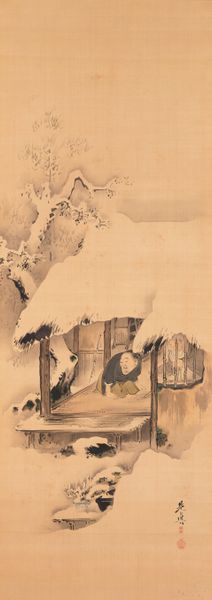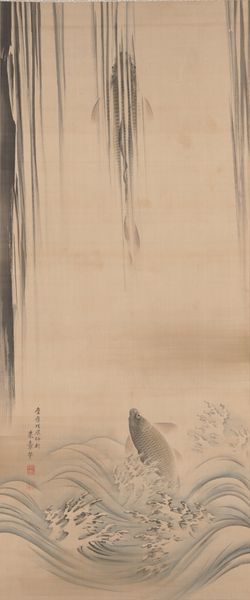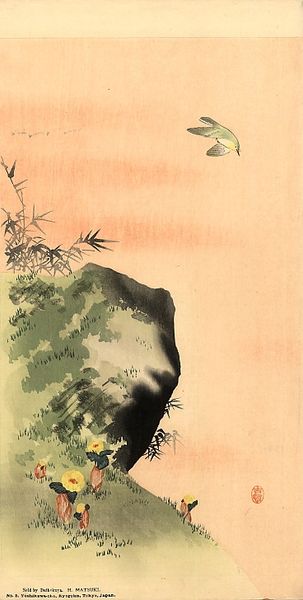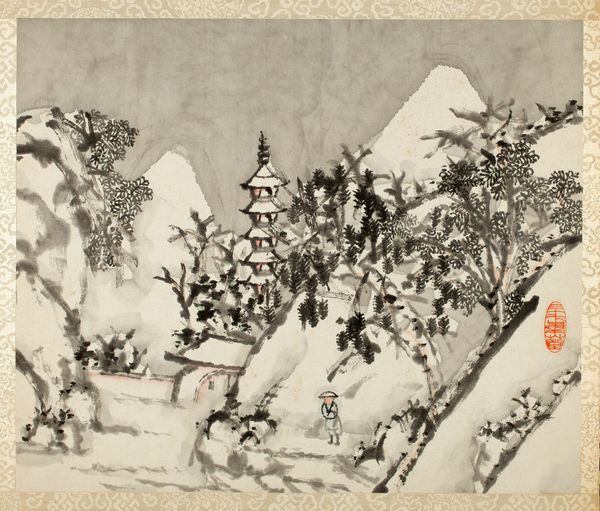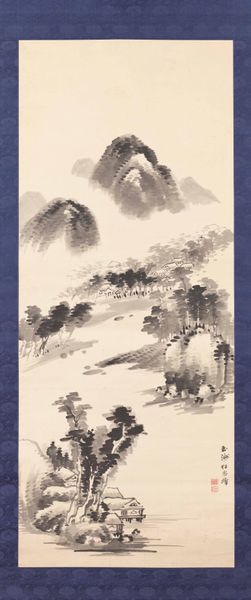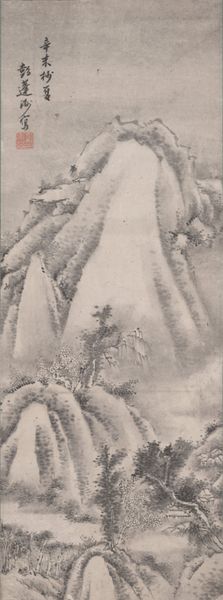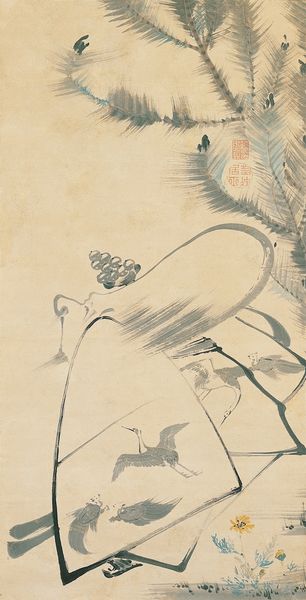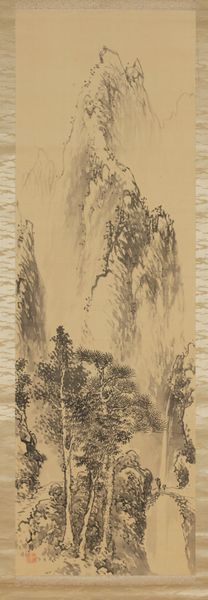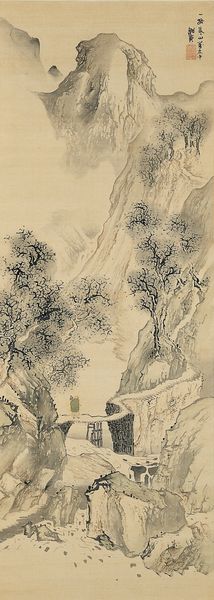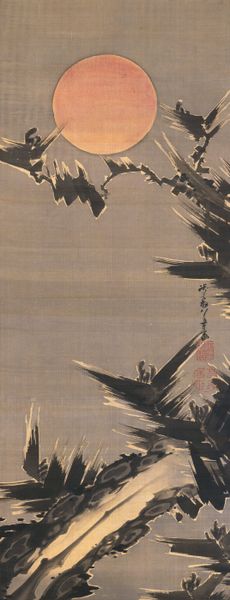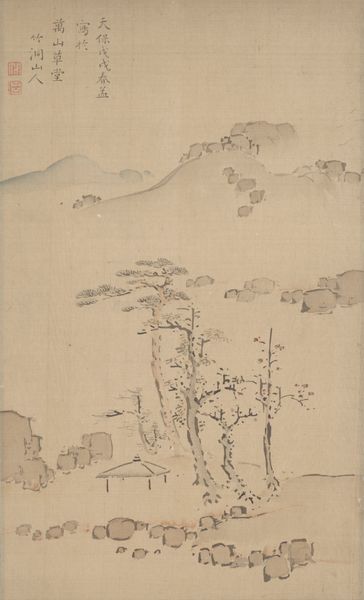
color-on-silk, painting, watercolor, hanging-scroll, ink
#
narrative-art
#
color-on-silk
#
painting
#
asian-art
#
landscape
#
japan
#
watercolor
#
hanging-scroll
#
ink
#
folk-art
Dimensions: 35 13/16 × 12 5/8 in. (90.96 × 32.07 cm) (image)74 1/8 × 18 5/16 in. (188.28 × 46.51 cm) (mount, without roller)
Copyright: Public Domain
Curator: Standing before us is "Noh Play Hachinoki," a hanging scroll crafted with ink and color on silk, believed to be from the 19th century and attributed to Shibata Zeshin. Editor: It feels… isolated. Stark. The way the snow dominates the scene, pressing down on the small dwelling—the muted palette contributes to this feeling, creating an almost palpable sense of cold and hardship. Curator: Precisely. Zeshin, known for his lacquerwork, translates that mastery here. Observe the deliberate composition—the strategic placement of the bare branches against the snow-laden pines, the textural contrast achieved through the controlled washes of ink. There is such intentionality. Editor: And how interesting that he would use silk. We know the materiality of silk often reflects wealth and high status in Japan. In that regard, I must question how the artist considers this relationship of class between the depicted humble, almost derelict hut and its inhabitants, contrasted with such rich material choice for the work’s base. I wonder if Zeshin uses material tensions to highlight social imbalances or offer critique of contemporary society. Curator: Your point speaks volumes about Zeshin’s sophisticated technique. While narrative elements are at play, I remain drawn to the interplay of form and ground. How the snow itself almost dissolves into the background. It’s a fascinating exploration of figure-ground relationships. The calligraphic quality of the line, the spatial arrangement...these are integral to understanding its aesthetic impact. Editor: Still, thinking about folk-art traditions makes me wonder: to what degree does this aesthetic choice connect with labor involved? For example, the harvesting of silk is painstaking. How is such work seen or not seen within the piece itself? Does Zeshin risk overlooking the historical context with its choice of materiality? Curator: An excellent point to consider when observing Zeshin’s art. This piece becomes an aesthetic construction of cultural, historic and material tensions. Editor: Exactly. It leaves us thinking about the interconnectedness of production, consumption, and representation in 19th-century Japan.
Comments
minneapolisinstituteofart almost 2 years ago
⋮
Set in the mid-Kamakura period, the story of Hachinoki (“Potted Trees”) is a tale of loyalty rewarded. One snowy day, a traveling monk appeared at the home of the warrior Sano no Genzaemon-no-jō Tsuneyo and asked to stay. Tsuneyo initially declined as his family was too poor to host anyone, but at the urging of his wife, changed his mind. To keep the house warm, Tsuneyo sacrificed his prized bonsai trees—miniature plum, cherry, and pine—as firewood. Tsuneyo explained to the monk that his family had once owned a large piece of land, but a relative had usurped it. But despite his poverty, he avowed, he would immediately ride his horse to battle if the shogun needed him. A few days later, he received a mobilization order by the regent Hōjō Tokiyori. Arriving in broken armor and holding a rusty weapon, Tsuneyo endured the mockery of his peers when he was specifically called out to meet the regent. He then realized that the monk he had helped was Tokiyori. To show his appreciation, Tokiyori promised to return the lost land to him, and gave three estates for the three trees Tsuneyo sacrificed.
Join the conversation
Join millions of artists and users on Artera today and experience the ultimate creative platform.
